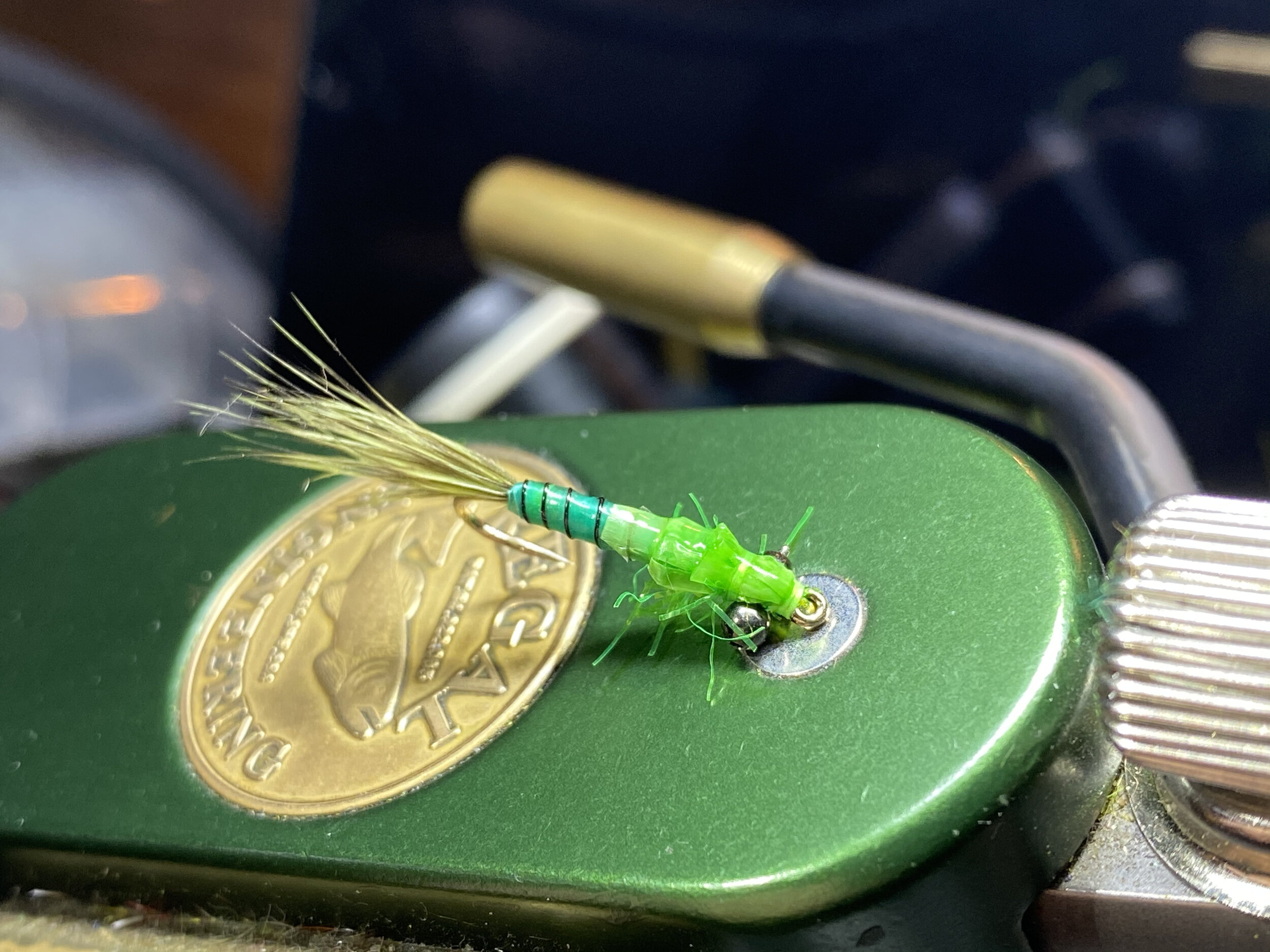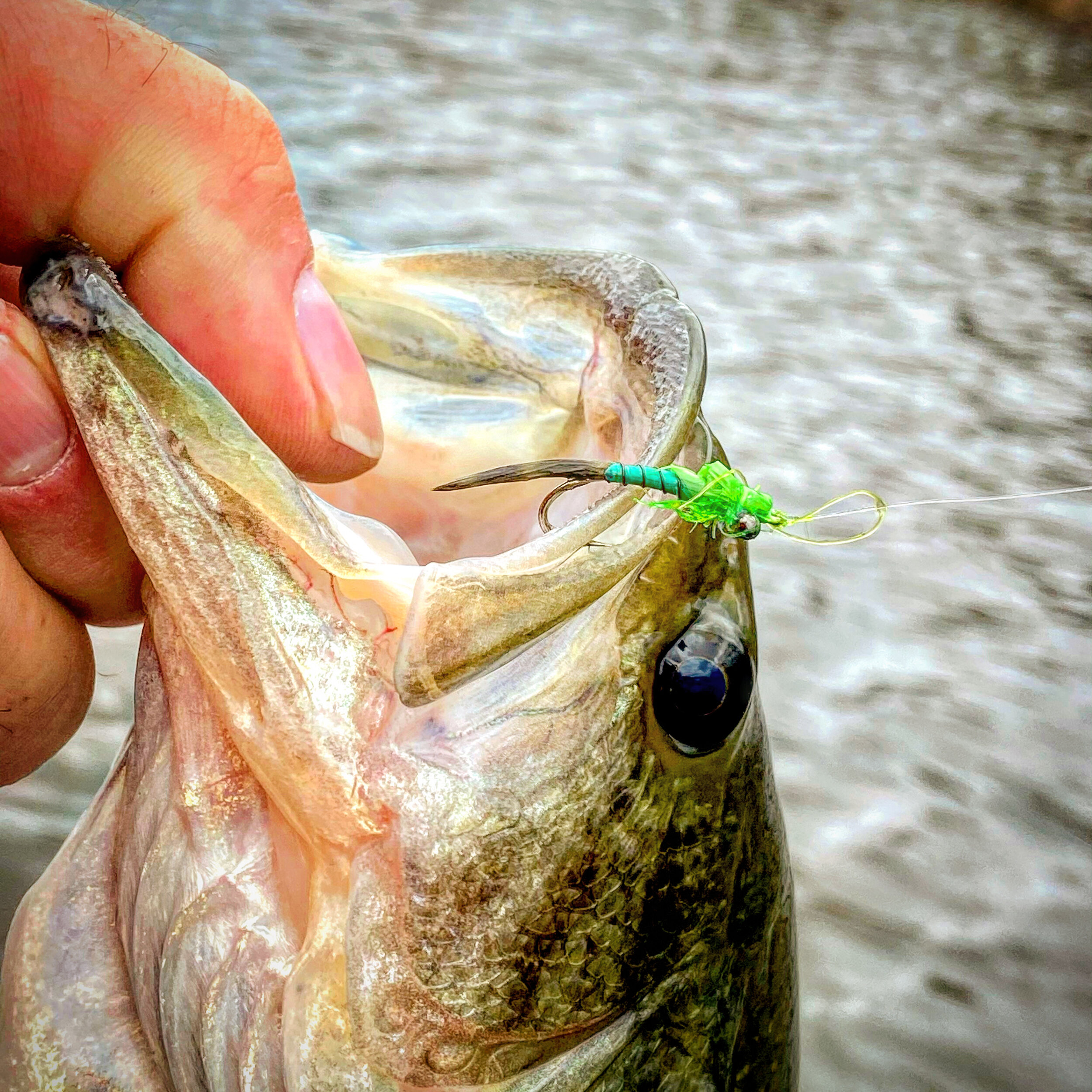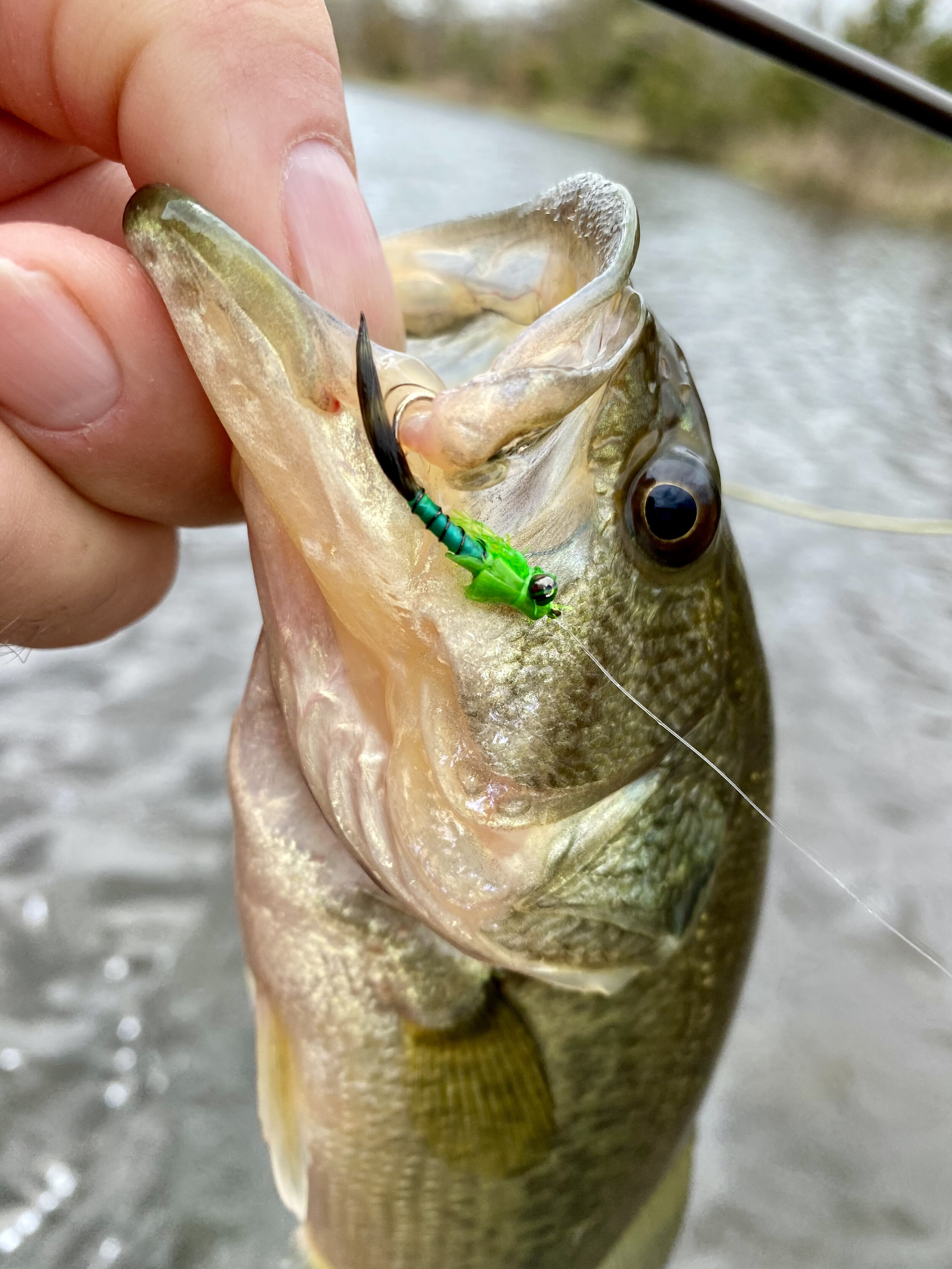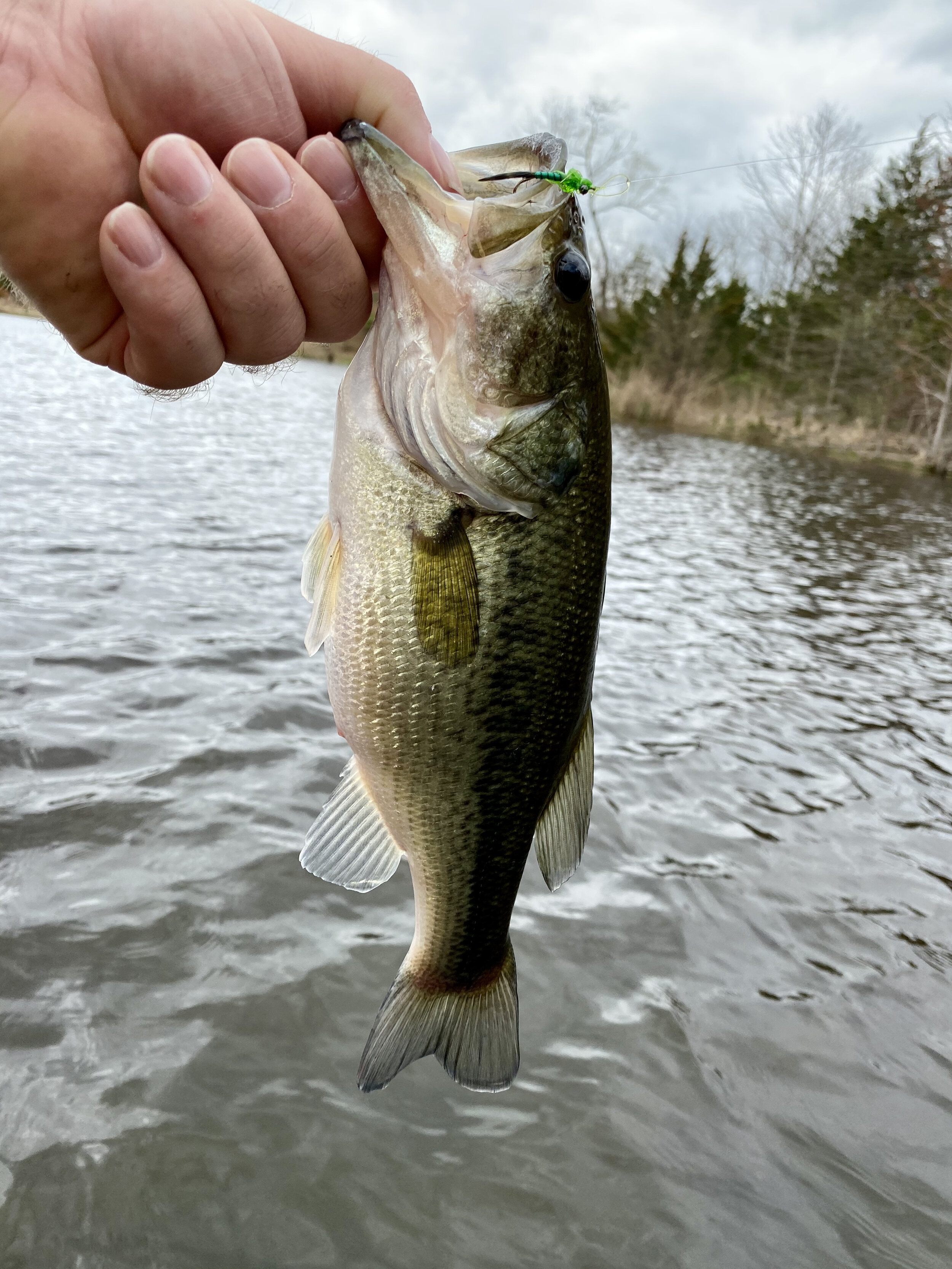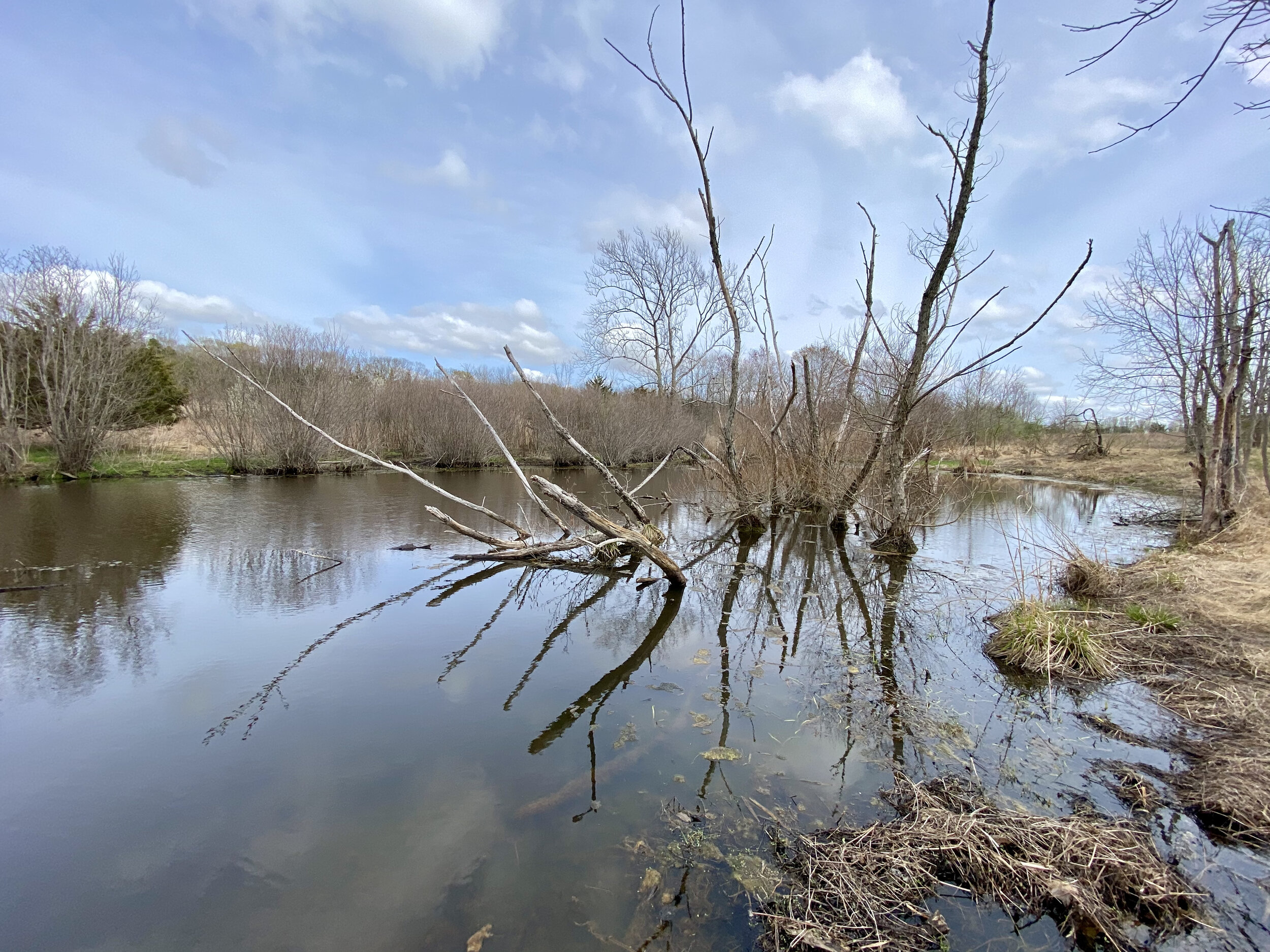Even though my kids have grown and no longer believe the Easter Bunny visits our home every year, Easter baskets still play a role in our holiday tradition. Everyone in the family gets one. This year's baskets contained a green plastic straw that caught my eye. I have been thinking about tying up some brightly colored, damselfly nymphs. The bright green straw in this year's baskets looked like it might be just the material I was looking for to create the body of my new pattern. Sunfish and bass often show a preference for garish colors at times, and a brightly colored damselfly nymph could be perfect for those occasions.
Bluegills loved this bright nymph pattern!
Damselfly nymphs are probably my favorite warm water nymph patterns. Damselflies are found everywhere (at least in my neck of the woods), and many fish species relish them. I typically use damselfly nymph patterns in natural hues of olive, green, tan, and brown. However, during certain times of the year, my local panfish and bass seem to key in on brightly colored flies. For those occasions, I thought a bright damsel nymph would be just the ticket.
There is enough damselfly body material in this basket to last several life times!
With that in mind, I grabbed a handful of the synthetic grass from the Easter basket and headed downstairs to the fly lab. A few moments later, the Easter Basket Damselfly Nymph was born.
This version of the Easter Basket Damselfly used Chartreuse Grizzly hackle fibers for the tail.
I created two different versions, one with a hackle fiber tail and one with variegated chickabou as the tailing material. Both flies had abdomens of wrapped synthetic grass material, counter wrapped with wire, and coated with a thin layer of Solarez Bone Dry. The Bone Dry resin and wire ribbing are used to protect the material body material. I had a few different colors to work with, and each had different properties. The green material appeared to be pretty strong and had zero stretch. The chartreuse grass seemed to be thinner and had a slight stretch to it when pulled, and the yellow had a matt finish and was not as easy to work with as the other two.
For the legs, I went with Semperfli Straggle Legs. Straggle Legs are used in many of my warmwater patterns as it is buggy as hell, very durable, and comes in a wide range of colors. I tied a few with bright hi-viz thoraxes and some with more muted natural tones. I used swiss straw for the wing case, though many other materials can be used, including the grass used for the body material. I recently picked up a multi-card of Semperfli Swiss Straw that contained some very bright colors I have not seen in this material before. I had wondered how I would use such brightly colored swiss straw. I wonder no more as they fit the bill perfectly here.
For eyes, small metal bead chain eyes mounted on the hook's underside added some realism and a little weight. You could use mono eyes if you wanted to eliminate the weight and get the same effect. Finally, a drop of UV resin on top of the wing case to protect it as swiss straw is a delicate material.
This bass was the first fish caught on the Easter Basket Damselfly.
The question remained would they work. As it turns out, they do, quite well, in fact. A few days after the holiday, I headed down to a local pond, and on my second cast with an Easter Basket Damsel, I hooked a fat largemouth bass that was cruising the shallows. I caught three more bass on the pattern before I landed my first bluegill!
The panfish, bluegills in this case also seemed to relish the pattern. While the bass seemed to be patrolling the edges of the main body of the pond the bluegills were noticeably absent. I eventually found them in a calm, shallow backwater which in retrospect should have been the first place I looked for them this early in the season. Once I located the fish they came on nearly every cast. As part of this experiment on using a very bright fly I switched off to more subdued damselfly nymph patterns in both olive and tan. While I still caught fish, the takes came quicker on the brighter flies.
This is ideal early season panfish water. Bright sunny days warm these shallow dark bottom flats attracting large numbers of panfish..
Damselfly nymphs are a favorite still water pattern for trout as well. These bright flies have yet to be tested in a coldwater environment so I tucked a few in my Stillwater box to try on some trout lakes on my trip out west this year. We’ll see what happens. I have one more fish to try this pattern out on as well. Shad are currently running in the Delaware River close to my home. I try and find to time to chase them with a fly each year. They have a fondness for brightly colored flies, this one could be perfect!
Damselfly nymphs a stable in my still water trout fly boxes. Does the Easter Basket Damselfly Nymph have too much bling? Time will tell…
Shad like brightly colored flies too. I plan on tying up some larger versions of the Easter Basket Damsel to add to my shad fly box.
I have what looks to be several lifetime's worths of Easter basket stuffing, so the challenge will be to see where else I can find a use for this material. That is one of the things I love about warmwater fly tying. You have so many opportunities to incorporate oddball materials into your creations!
Pattern Recipe:
Hook: Natural Bend Nymph Hook size 8
Thread: Semperfli 6/0 Classic Waxed Thread - Chartreuse
Tail: Hackle fibers or Chickabou
Ribbing: Small black wire
Body: Synthetic grass used to fill Easter baskets coated with Solarez Bone Dry
Legs: Fl. Green Semperfli Straggle Legs
Shellback: Fl. Green Semperfli Swiss Straw coated with Solarez Bone Dry
Eyes: Small bead chain or mono eyes
Looking for the materials to tie the flies mentioned in this post? Please consider purchasing them from our shop. Click on the links in the article or the button below to check out our line of flies, fly tying materials and fly fishing accessories.
